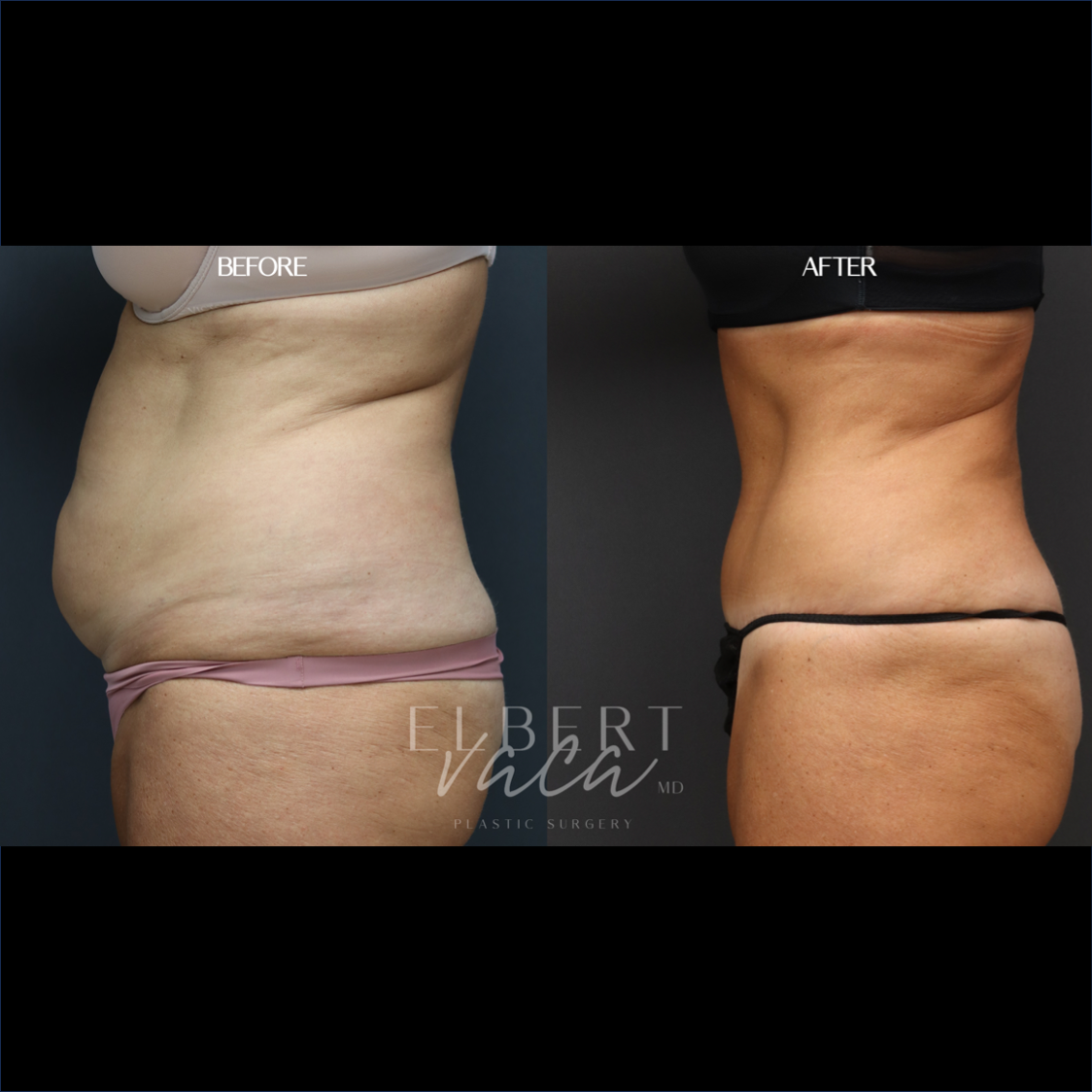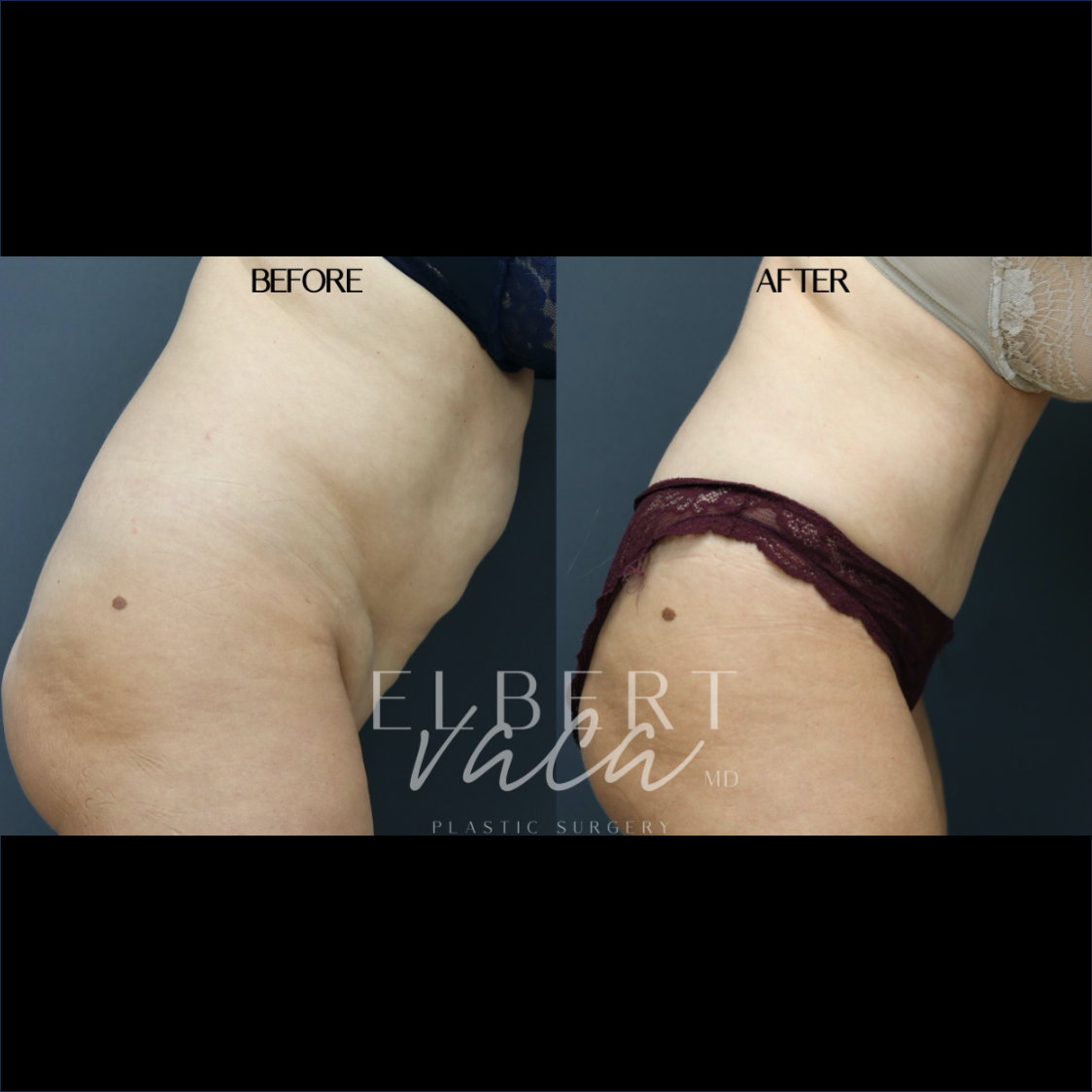An abdominoplasty, or tummy tuck, is a common surgical procedure that treats excess abdominal skin and laxity that commonly occurs after pregnancy. An abdominoplasty is often combined with liposuction to improve the contour or silhouette of the abdomen.
Liposuction can be performed circumferentially around the trunk (i.e., “360 Lipo”) to further define the back and flank area – this can significantly complement the waist-defining effect of an abdominoplasty.
It is important to note that while skin and excess fat are typically removed, an abdominoplasty is NOT weight loss surgery. Ideal candidates for abdominoplasty should be of a stable and healthy weight to minimize the risk of complications and maximize the potential aesthetic result.
Unfortunately, for many patients, diet, and exercise alone will not reverse the stretching of the skin and abdominal muscles and a tummy tuck can significantly improve the appearance of the abdomen.






Abdominoplasty surgery takes approximately 3 hours but may take longer if other procedures are performed at the same time.
All surgical procedures carry a degree of uncertainty and risk. Thankfully, the risk of a major complication is rare.
The principal tradeoff of an abdominoplasty are scars on the abdomen. Poor healing can occur – this is more common in nicotine product users. Unfavorable scarring is more common in patients who experience poor healing. Infection and bleeding are rare but can occur.
After surgery, there will be a change in sensation in the lower abdomen. Sensation recovers over time; however, loss or decreased sensation can be permanent in some areas. Occasionally, fluid can accumulate beneath the skin that may need to be drained.
If you have an umbilical hernia, there is an increased risk of poor healing of the navel. Though rare, the most concerning risk of an abdominoplasty is the formation of a blood clot in your legs (DVT) that can travel to your lungs, otherwise known as a pulmonary embolism (PE), which would require blood thinning medication and other potential treatments. The best way to decrease the risk of a blood clot is to be of a healthy weight prior to surgery and to walk and remain mobile after surgery.